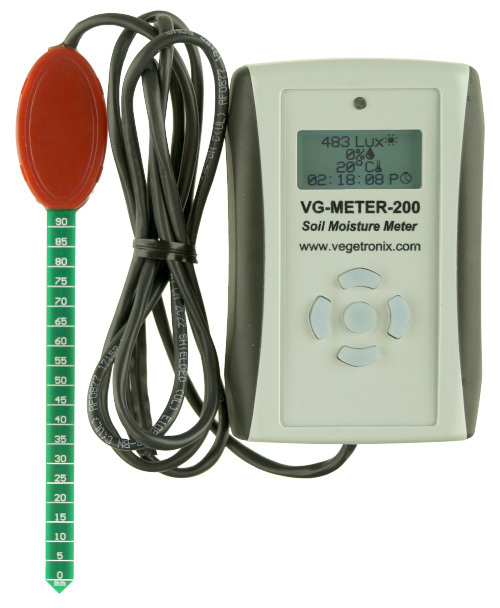Understanding the Various Sorts Of Moisture Meters and Their Applications
Understanding the Various Sorts Of Moisture Meters and Their Applications
Blog Article
Recognizing the Relevance of a Moisture Meter in Stopping Mold and Water Damages in your house
In the world of home maintenance, the presence of moisture can commonly be a quiet yet formidable enemy, capable of triggering prevalent mold and mildew development and dangerous water damage if left uncontrolled. Recognizing the value of a dampness meter in this battle is not merely a choice but a calculated need.
Relevance of Moisture Detection
Effective wetness discovery methods are crucial for safeguarding properties and avoiding prospective mold growth and water damage. Dampness can seep right into various structure products, resulting in structural issues and wellness threats. By making use of a dampness meter, home owners can proactively determine areas susceptible to excess moisture, permitting for prompt intervention and mitigation techniques.
Moisture meters supply precise readings of moisture levels in different products such as drywall, concrete, and wood. This data assists in identifying locations of issue, even in covert or hard-to-reach locations. Early detection of moisture buildup allows prompt repairs or modifications to protect against more damage.

Exactly How Moisture Meters Work
Moisture meters play an essential role in the proactive identification of excess dampness, aiding in the avoidance of potential mold growth and water damage by providing accurate readings of moisture levels in various building products. Some advanced dampness meters pin both incorporate and pinless modern technologies for thorough dampness discovery. Recognizing just how moisture meters feature is important for precise and timely wetness level assessments, allowing reliable preventative measures versus mold and water damage.
Finding Early Indication
Upon initial inspection of a residential property, identifying subtle indicators of excess moisture comes to be vital in the early detection of possible mold and mildew growth and water damages. Some typical early indication include stuffy smells, water stains on ceilings or wall surfaces, peeling paint or wallpaper, and deformed or tarnished surfaces. Stuffy odors frequently suggest the presence of mold and mildew or mildew, also if no noticeable indicators appear. Water spots can signal leakages or seepage, while peeling paint or wallpaper might be a result of dampness compromising the attachment of these materials to the surface area. Distorted or discolored surface areas, such as buckling floorboards or tarnished drywall, are clear signs of water damage. In addition, a boost in allergic reaction signs or respiratory system issues amongst occupants may recommend the presence of mold and mildew due to excess moisture. By quickly identifying and resolving these very early warning indicators, property owners can minimize the risk of substantial mold and mildew growth and water damage in their properties.
Avoiding Mold Growth
Recognizing early warning indications of excess dampness within a residential property not only makes it possible for punctual discovery of prospective mold growth and water damage but additionally serves as a proactive measure in avoiding the expansion of mold and mildew. To effectively prevent mold development, it is crucial to deal with any type of resources of dampness without delay.
Checking wetness degrees in areas prone to wetness, such as basements and creep spaces, making use of a wetness meter can also help in very early detection of elevated dampness degrees and prospective mold and mildew development - Moisture Meter. By taking proactive steps to stop excess moisture and mold development, homeowners can safeguard their residential or commercial property and indoor air top quality.
Advantages of Routine Monitoring
Routine tracking of moisture levels in a home can play an important role in keeping a healthy and balanced indoor atmosphere and preventing possible mold and water damages. By regularly checking moisture degrees, property owners can spot any kind of issues immediately and take essential actions to avoid mold and mildew growth and water damages. One of the crucial benefits of normal monitoring is early detection. By recognizing and resolving More Help high dampness degrees at an early stage, homeowners can step in before mold and mildew has the chance to establish and spread out. This proactive technique can conserve both money and time in the future by avoiding comprehensive mold removal and repair costs.
Additionally, routine tracking enables property owners to track patterns and fads in dampness levels in time. By establishing a standard and surveillance changes, individuals can recognize any kind of locations of issue or prospective vulnerabilities in the building's framework. This data-driven method enables targeted treatments and upkeep initiatives to deal with underlying issues before they rise into even more substantial troubles. Inevitably, the regular monitoring of moisture degrees empowers home owners to secure their property, protect their health and wellness, and preserve the integrity of their interior environment.

Conclusion

By using a wetness meter, building owners can proactively recognize areas prone to excess moisture, enabling for timely intervention and reduction strategies.

Keeping an eye index on wetness levels in areas vulnerable to moisture, such as basements and creep rooms, utilizing a dampness meter can likewise recommended you read assist in very early detection of raised dampness levels and prospective mold development. (Moisture Meter)
Report this page